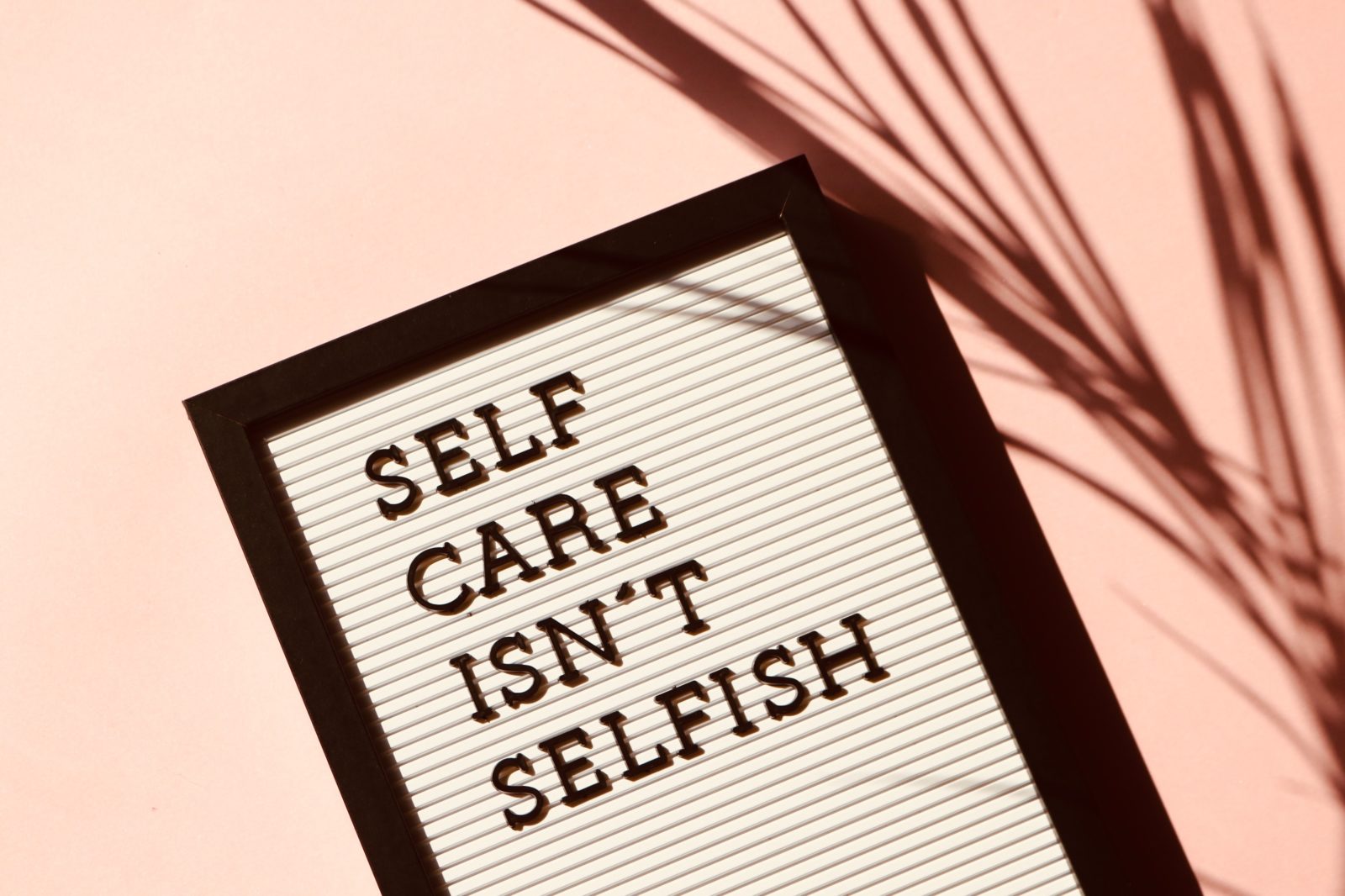by Lakhpreet Kaur
There has been a huge uptick in the “wellness” and “self-care” market since 2016. Many blogs, website, retreats, and Instagram “influencers” have rallied around those terms making them their singular mission. The good thing about this trend – it has made space for us to talk about how we, as women, can make time for ourselves and prioritize our own wellbeing. The not so good thing – until recently, many of the conversations around “self-care” and “wellness” were leaving out the experiences of minorities, women of color (WOC), and the LGBTQIA+ community.
“For so long, WOC have been told what self-care looks like from perspectives that are not like that of our own,” writes Vanessa Santos. “While there is nothing wrong with women of all walks of life spreading all kinds of self-care loving… self-care for the WOC looks a little bit different than that of her counterparts….Particularly because self-care for us is tied into so much–culturally, racially, politically, spiritually and medically…” Plus, the commodification of self- care (like measuring our wellness by the number of spa-days, brunches, vacations, and massages we get) results in a narrow definition of self-care that only few of us can achieve.
Luckily, there are some women (see the websites at the end of this article) who are trying to re-define self-care in a way that is cultural specific to their realities and accessible to a wider range of people. They recognize that self-care is very personal and unique, and will look different person-to-person.
This exploration brought up a lot of questions for me. What are the origins of “self-care”? What does “self-care” look like for a brown, first-generation American, Sikh woman, like me? Is it face-masks, spa retreats, and brunches as seen on Instagram? or is it something different? Or is it all of the above? What can we learn about self-care from Gurbani, rehat (lifestyle), and tvarikh (history)?
Origins of Self-Care
The term “self-care” was originally a medical idea that was reintroduced by Black social justice activist Audre Lorde in 1988 in her book, A Burst of Light. At the time, she defined “self-care” as a radical and political act of self-preservation, stating, “Caring for myself is not self-indulgence, it is self-preservation, and that is an act of political warfare.” In this way, Natalia Mehlman Petrzela, historian of contemporary American politics and culture, says “self-care” can be seen as claiming autonomy over your body, time, and attention as an act against racist and sexist institutions.
What does self-care mean to me, as a Sikh?
So, how does this definition of self-care apply to me, as a Sikh? I believe a Sikh’s mission is to create a just and compassionate society where everyone is free to reach their full potential through naam japna (meditation), kirat karni (honest living), vand chakna (community service), and uprooting tyranny to establish justice. I believe a Sikh’s mission is to embody miri-piri (temporal and spiritual power) within themselves and within our communities. In taking up this mantle, we have historically been met with genocide, violence, and erasure, leading us to resistance for survival.
We have celebrated our resilience and our willingness to fight; and we honor the shaheeds, trailblazers, and survivors who came before us. In part, it is this celebration that gives us the strength and courage to go on. But equally as important, and not as celebrated, are acts of self-preservation, healing, rest, and nourishment. “Self-care can be a political act in the face of oppression and absence of care from broader social institutions and interactions,” writes Dr. Kris De Welde, Director of Women’s and Gender Studies and Professor at the College of Charleston.
For us Sikhs to be successful in achieving the above stated goals, we as individuals and as a panth, must physically, economically, socially, and spiritually survive. In general, Sikhs have lived in societies that were not built for us, and thus did not have social institutions that served us. In some cases, these institutions worked against us (ie – violent Mughal empires, exploitative British empire, and racists lands abroad). Such oppressive systems, ideas, and people work hard to maintain their power and thus, do not care for our survival.
To survive we must employ self-care; and in surviving, we are political actors. In other words, surviving and thriving is self-preservation and an act of political resistance. To do so, we need our strength, we need to take care of our bodies, and we need to honor our humanness. “It is a radical defiance to look after each other, to exist as our true selves and act despite oppression,” writes Act Build Change.
Valuing Women Through Self-Care
How does this apply to me as a brown woman? Dr. Shanesha Brooks-Tatum’s explanation resonated with me a lot. Taking care of myself is resting patriarchal structures of oppression that praise women for being self-sacrificing, constantly busy, chronically fatigued, and working ourselves to the bone.
For centuries Kaurs and Sikh women (most all women) have cared for others before themselves and often served as primary caregivers. While there’s nothing inherently wrong with this, it becomes problematic when we are excepted to assume this role and we are expected to sacrifice our own wellbeing to fulfill it. In this light, self-care becomes subversive because it disrupts social models that say women are undervalued.
Dr.Brooks-Tatum talks about the larger implication of Black women not taking care of themselves which, can apply to Sikh women and many women of color. “Indeed, people and things that aren’t cared for are considered expendable,” she writes. “So when we don’t take care of ourselves, we are affirming the social order that says black women are disposable.”
Self-care in Gurbani & Sikh History
Interestingly, elements of self-care can be seen in Sikh history and in Gurbani. Here are a few examples of recuperation and rejuvenation:
– Rest: One of our earliest sakhis is about Guru Nanak Sahib resting under the shade of a cobra.
– Meditation: All of our Gurus spent time meditating. Many would wake up early, before the start of the day, setting aside time to reflect on Waheguru.
– Being in Nature: Recognizing the calming and restorative powers of nature, Guru Har Rai established menageries and gardens. “In the 17th century, Guru Har Rai Ji was instrumental in developing Kiratpur…as a town of parks and gardens: he planted flowers and fruit-bearing trees all over the area, as well as medicinal herbs and wildlife sanctuaries for the benefit of the masses…” writes Eco Sikh.
– Singing: Bibi Amro Ji was known for singing kirtan while working around the house.
–Seeking Sanctuary: Many people would seek the sanctuary and care provided by Mata Khivi.
– Music: To make sure Sikhs developed a sant-siphai (saint-solider) paradigm, the Gurus established a tradition of Gurmat Sangeet and made music and poetry part of our lifestyle.
–Gurbani: “Rest” and “sanctuary” are central themes in Gurbani. Recognizing rest as a human desire and need, Guru Sahib explains how our minds can be put at ease and where we can find care.
ਐਥੈ ਮਿਲਹਿ ਵਡਾਈਆ ਦਰਗਹਿ ਪਾਵਹਿ ਥਾਉ ॥੩॥
aaithai mileh vaddaieeaa dharageh paaveh thaau ||3||
In this world you shall be blessed with greatness, and in the Divine Court, you shall find your place of rest. ||3|| Guru Arjan Sahib, Ang 47.
Perhaps these Sikhs knew that if they felt depleted, they could not give to others. Perhaps they made self-care a priority as a way to sustain themselves and their work to dismantle oppressive forces.
Self-care and Trauma
In Sikh spaces we often celebrate the strong, unwavering Sikh women who persevere. On one hand, this is beautiful and empowering. But on the other hand, it puts a lot of pressure on us. We need to honor rest as much as we honor work. Because being in a constant state of giving mode and to be strong all the time can be draining.
This wearing down is compounded if you have experienced trauma. As writer Leah Thomas encourages, it is important to reflect on this history of trauma and how to heal, especially when society tells us we must be super-women.
Some Sikh women of today have experienced several specific traumas. To name a few: the 1984 Genocide, the 1947 Partition of Punjab, the Green Revolution’s social and economic devastation of Punjab, the disappearance of loved ones by the Indian government, religiously motived hate-crimes and discrimination, feeling unsafe or attacked at Gurdwaras, etc. Some Punjabi women face the trauma of honor abuse/killing, domestic violence, immigration challenges, racial discrimination, etc. Some of the families of these women go on to experience inter-generational trauma – or learned and biological responses to stressors that are passed down to future generations.
These women deserve time and space to processes the trauma and complexities of their past, their daily lives, and in their communities. Not only do we need to take time to relax and heal, but we need to create spaces and opportunities for the women around us to do the same. This legacy of trauma might mean that our self-care will look different than what we see on Instagram; our experiences and needs are different than most social media influencers.
Fear of Being Called Selfish
We have all seen women in our families (or ourselves) taking care of everyone else before herself. Many of us are pushed to our limits out of fear that we will be called “selfish” and “inconsiderate” by our family or sangat if we don’t. “I have seen women labeled as selfish because they prioritized the gym and their own therapy over a request a family member asked of them,” writes Santos. “However, WOC can be so selfless; in fact, due to this we end up not taking good care of ourselves and put ourselves at risk for major health and wellness concerns. WOC have the highest risks of obesity, depression, anxiety and heart disease because we do not take better care of ourselves, and don’t manage our stress appropriately.”
Self-care as a Strategy
If not for our individual health and healing, self-care should be central in our strategy as Sikhs for the long-term health of the panth and to cultivate people to work against oppressive systems. As Dr. Brooks-Tatum writes, to take care of ourselves will help “…ensure that we’ll have the longevity to continue our activist work against racism, sexism, heterosexism, and other ‘-isms’ that attempt to circumscribe and control bodies in this world.”
Social justice activist Angela Davis expands on that and says, “Self-care has to be incorporated in all of our efforts…This holistic approach to organizing is, I think, what is going to eventually move us along the trajectory that may lead to some victories.”
Kaurs Weigh in on Self Care
In the Summer of 2020, Kaur Life hosted a virtual retreat and had as session called, “What is Holistic Health from a Gurmat Perspective?” It was a phenomenal conversation about mental health, menstruation, pregnancy, postpartum, menopause, and much more. Panelists included Dr. Sangeeta Kaur – OBGYN, Juspreet Kaur – nutritionist & natural family planning teacher, Rapinder Kaur – registered psychotherapist & art therapist, and navi kaur – healer & doula.
A common theme was self-care and wellness. Here’s what a few panelists shared:
“Lose your ego,” Sangeeta Kaur
“ I feel like there’s actually a lot in Gurbani about using man (mind) and than (body) for wellness. I think that that type of wellness is defined differently than in medical or science circles; the health of self is not attached to self-identity or our ego, but it’s recognizing the true self within us that is linked to Waheguru.
Many of us know the shabad (Ang 440) revleaed to Guru Amar Das Sahib:
ਮਨ ਤੂੰ ਜੋਤਿ ਸਰੂਪੁ ਹੈ ਆਪਣਾ ਮੂਲੁ ਪਛਾਣੁ ॥
man too(n) jot saroop hai aapanaa mool pachhaan ||
It roughly translates to: ‘Understand your own origin, understand the connection we have with the Divine.’ If you read the rest of that chant, it goes on to say, ‘Within our intellect is ignorance and ego. Through shabad our dirt is taken away… So come with nimrita (humility) and surrender our identity to that of the Gurus. Do not attach our identity to that of our own ego…The world is consumed by ego and self-identity. We need to recognize this, otherwise we will lose ourselves. We will lose ourselves into the false sense of what is an identity.’
For me, I think the wellness of the self is giving up this attachment to the self and actually putting forward habits that the Guru told us to do and adopting the Guru’s discipline into our lives. The Gurus have given us a path of disciplines of things to do for our own wellness. When we work towards holistic health, we are tapping in to that part of us that is recognizing the Divine rather than recognizing our vices.”
“Flourishing as a form of resistance”, Juspreet Kaur, Navi Kaur, and Rapinder Kaur.
“When I think about self-care I think of Shaheed Bibian – they are really great example of like healing and flourishing as a form of resistance in their everyday lives. They weren’t just coping on the day to day, they were able to thrive, through their resistance. I think for them, individual self-care ran parallel with panthic care. They didn’t see themselves as separate from the panth. They saw themselves as the panth and the panth is them,” Juspreet Kaur.
“I loved that. It makes me think of what it means to survive versus thrive in this world and this body…. If I’m not also caring for this vessel, I’m not able to provide seva,” Navi Kaur.
“The wisdom that we received from the original peoples of Canada, the indigenous people, is that our bodies and minds are gifts. So, it is imperative to look after what we’ve been given, and it’s a tragedy if we don’t. Maybe it’s even incredibly disrespectful to the Almighty Creator if we don’t. For Punjabi women, we put our own care on the back burner, and we put the needs of others before our own,” Rapinder Kaur.
Ideas on How to “Self-Care”
The expectations of being a brown woman in a diasporic, immigrant community can feel like the weight of the world. This is “something even the most luxurious face mask or skincare treatment can’t fix,” says writer Alexis Hinnant.
For some, self-care might mean deviating from the popular methods of mainstream self-care (like multi-step skincare regiments and fancy fitness classes) or spending a lot of money on items and experiences. These are great options but, for some they can be out of reach. If that’s the case, or if you’re looking for a different way to care for yourself, here are a few things you can try out. Creating a version of self care that is unique to you can feel rewarding, refreshing, and liberating.
Physical
-Meditate in the rhythmic nature of kneading dough for atta and roti.
-Dance around the house.
-Go for a walk.
-Find a way to move your body, even if it’s for 10 mins.
-If your time and budget allow, treat yourself with a manicure, massage, fitness class, or spa day.
-Practice gatkha.
Self -Talk
-Stop comparing yourself to others. We are all on different journeys and comparison will rob you of joy.
-Develop your own idea of beauty. We have been told that dark, kesh-dhari (hairy) bodies are shameful and disgusting; push back against that narrative and embrace your natural self.
-Talk to yourself to heal and soothe. Try not to say things to yourself that you wouldn’t say to a friend (ie: “You’re not good enough”).
-You are not broken – reframe your self-talk to be more positive
Body Image
-Resist and reject any ideas that try to control your body in a negative or judgmental way.
-Remember, your worth comes from Waheguru, not from your dress size or how clear your skin is. “I learned that self-care is remembering that I am more than a body and should never be defined solely by mine,” says Kamari. “Self-care became the recognition that I am a spirit, a mind, and a personality and my exterior can reflect that in a million ways at once.”
Mental Health
-Going to therapy or reading self-help books is not a sign of weakness and is not shameful.
-Meditate – this could me repeating “Wahguru”, or being still, or sitting by a tree.
-Listen to kirtan or katha while working.
-Do Gurbani vichars.
– Read gurbani to understand holistic health and wellness from the Guru’s perceptive
Rest
– Remember that self-sacrifice has its time and place.
– Stop celebrating being busy.
– Celebrate, don’t scorn or judge, naps at home or at work.
Community
-Have a support system of people/organizations/places you feel at home around.
-Talk about women in a way that is rooted in love, hope, possibility.
-If you have family members who might be surprised or offended that you’re taking time for yourself, be patient and explain your actions and intentions.
-Get new role models not role-martyrs. “I stopped glorifying women who gave it all till there was nothing left a long time ago,” writes Dr. Brooks-Tatum. “My role models are women who make time for themselves, for family, and for friendships.”
-Many of our mothers and grandmothers refuse help or a massage or a break; perhaps make tea for them unprompted, or do their errands.
-Lose your ego through discipline like seva, meditation/simran, kirtan, etc
Work
-Reach out for help if you need it.
– If you feel worn out, try to address the pain points .
Time
-Set boundaries and say “no”.
-Do what you love. Ask yourself, “What brings you joy? What makes you feel alive? What you’re passionate about?”
-Set priorities and boundaries – without apology. “Remove toxic people from your life,” writes Dr. Brooks-Tatum. “Block out times to take care of yourself and make self-care just as much of a priority (or perhaps even more so) than other aspects of your life.”
-Engage in creative practices as a form of healing and expression
Conclusion
Ultimately, if we don’t take care of ourselves, who will?
“It is okay to help others, but not at the cost of helping ourselves,” writes Santos. “Self-care for the woman of color is a lifestyle. A daily practice. It is a reset, recharge, re-adjust, restart, refocus, reclaim, re-emerge, release…all of that… Self-care for the woman of color is a radical act that goes against everything we have been taught to be.
So ask yourself, what does “flourishing as a form of resistance” mean for you?
Resources
A History of Self-Care by Aisha Harris
Self Care for the Woman of Color by Vanessa Santos
18 Women of Color on What “Self-Care” Looks Like in the Age of Isolation by Sydney Gore
Self-Care is Subversive by Dr. Kris De Welde
Reflections on ‘A Burst of Light by Audre Lorde’ by Act Build Change
Subversive Self-Care: Centering Black Women’s Wellness by Dr. Shanesha Brooks-Tatum.
Audre Lorde Thought of Self-Care as an “Act of Political Warfare” by Sarah Mirk
13 Black Women In Wellness Share What Wellness & Self Care Means To Them by Leah Thomas
What Self-Care Means to Me as a Woman of Color by Alexis Hinnant





3 Comments
Jaswinder Kaur
01/23/2022 at 11:39 amGuru fateh, Lakhpreet
Excellent article, it was high time somebody addressed it. Thank you.
It jives with me, If I am healthy and healed than only I can help others with their health and pain.
Apinder Sahni
02/02/2022 at 11:49 amGreat detail and insight in this article Lakhpreet, a lot of detail that I have come across for the first time. Thanks for sharing
Lakhvir
12/30/2022 at 4:53 pmLovely article. Very insightful.